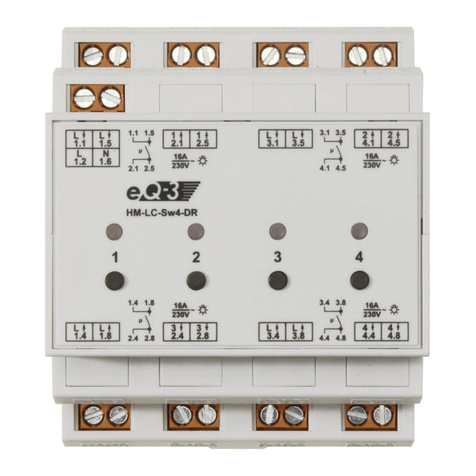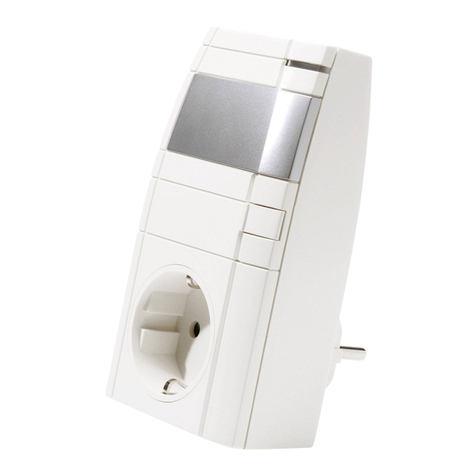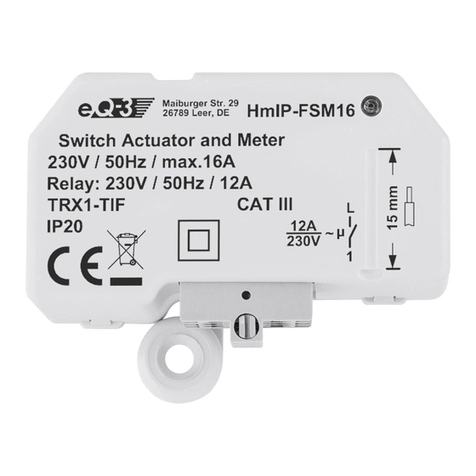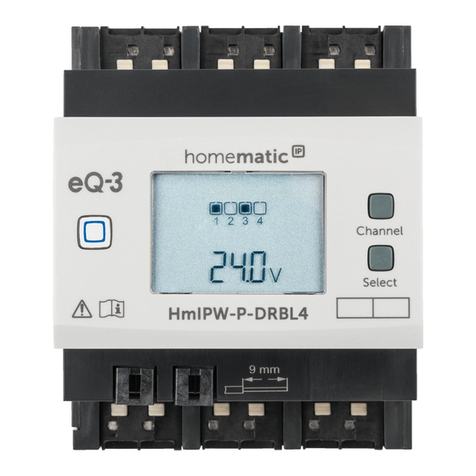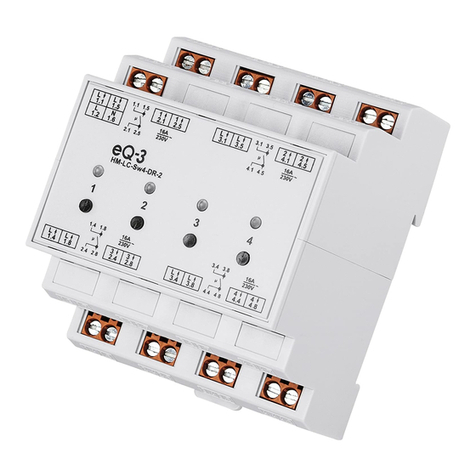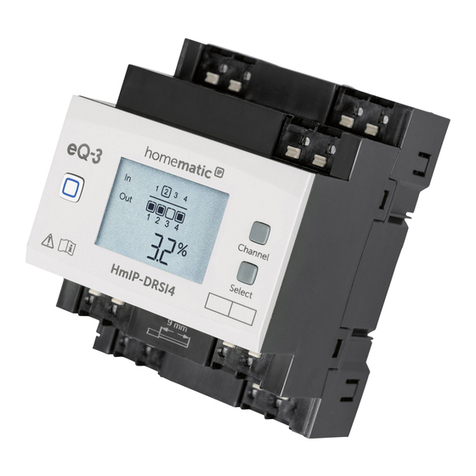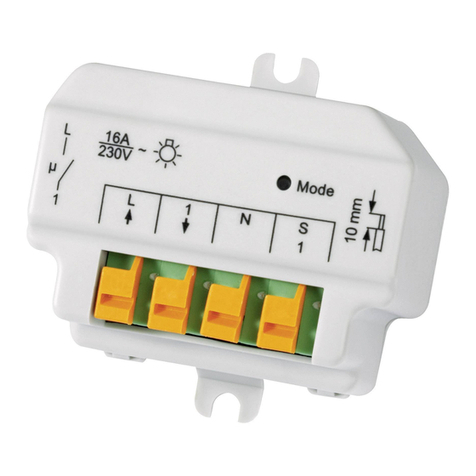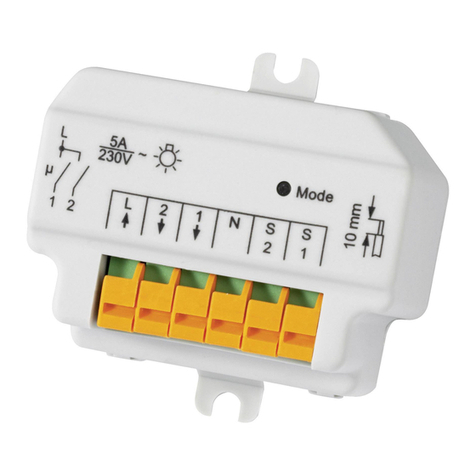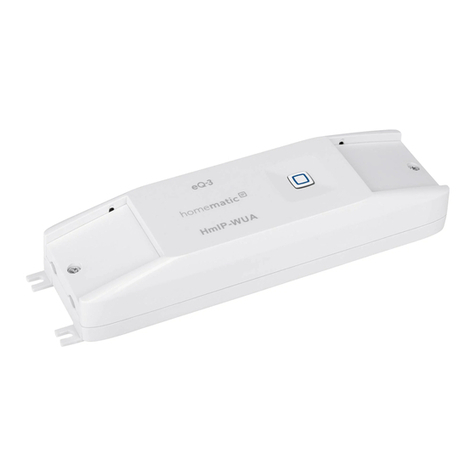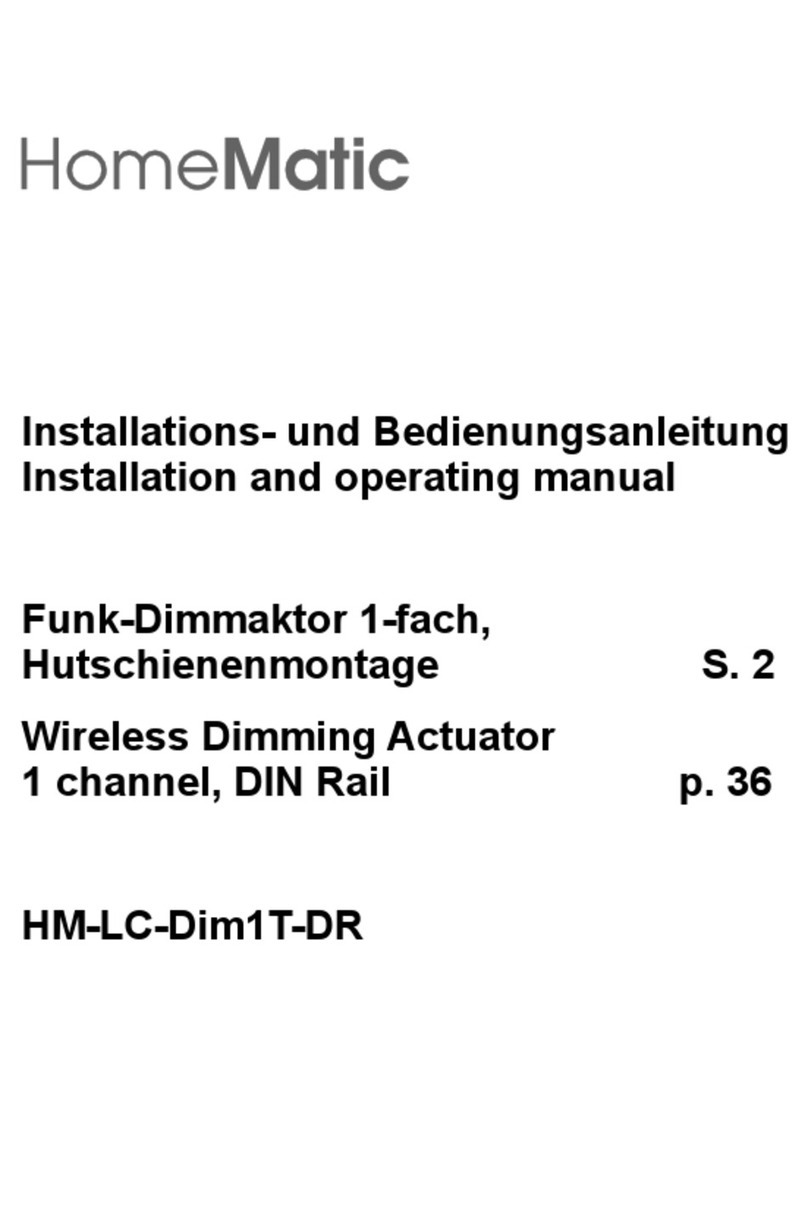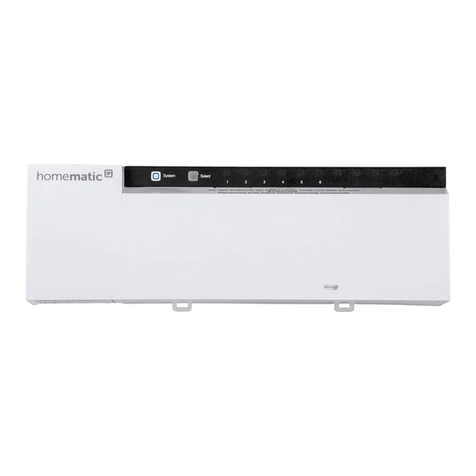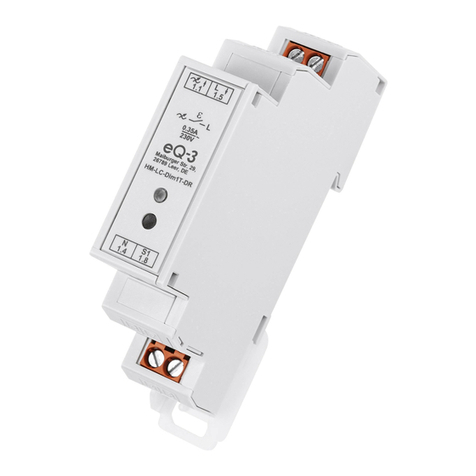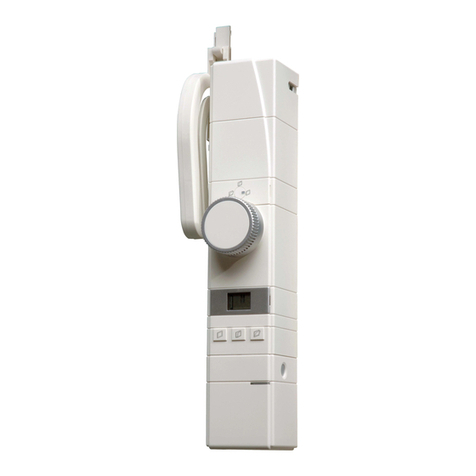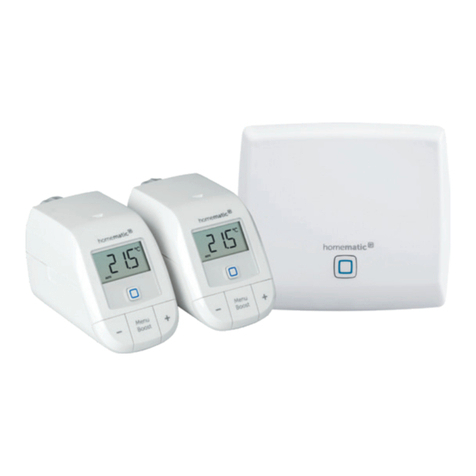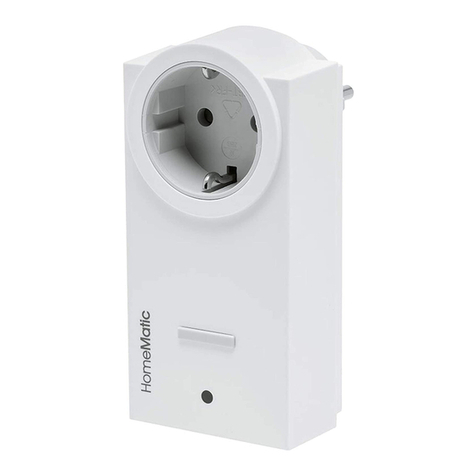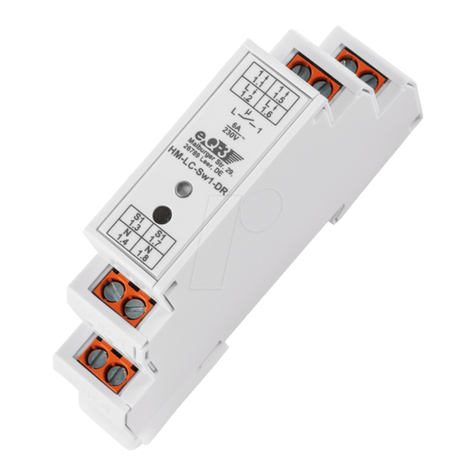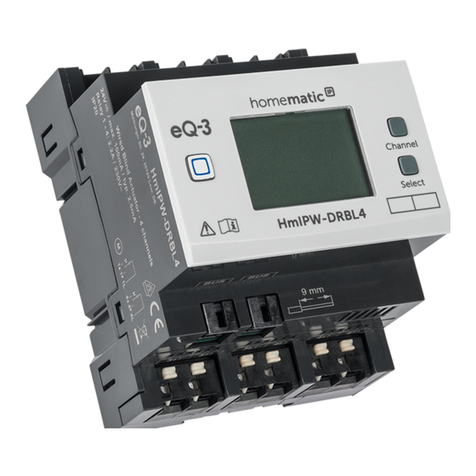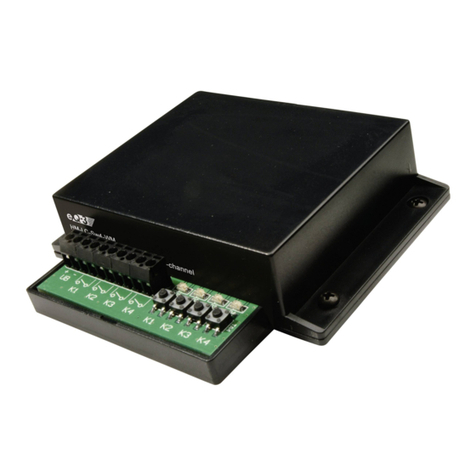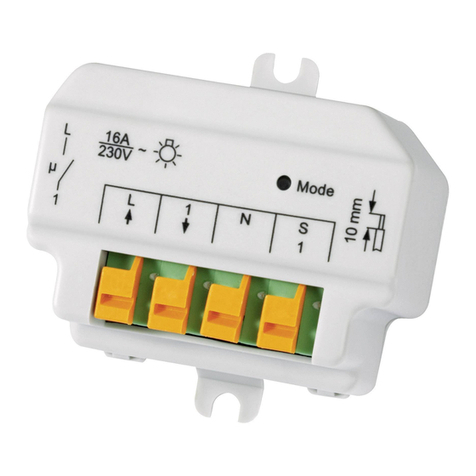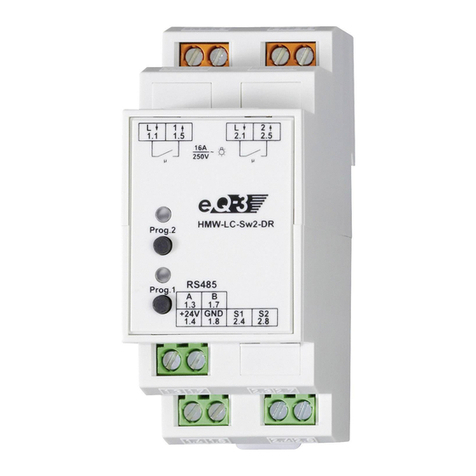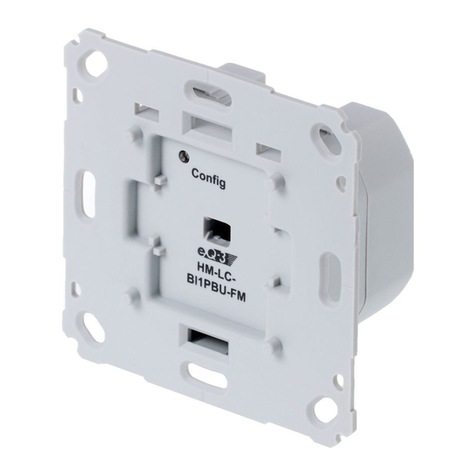
Behaviour after power recovery Technicalspecications
16 17
tion of a system. If the duty cycle is exceeded, this is indicated by one
longandoneshortredashofthedeviceLED,andmaymanifestitself
in the device temporarily working incorrectly. The device starts working
correctly again after a short period (max. 1 hour).
9 Behaviour after power recovery
After the device has been inserted to a socket or after power recovery the
switchactuatorperformsaself-test/restart.ThedeviceLEDwillashifan
errorisdetectedduringthischeck(seesec.„8.1Flashcodes“onpage
14). This is repeated continuously and the device does not perform its
function.
If the test is completed without errors, the switch actuator transmits a
wireless telegram containing its status information. To prevent all Home-
Matic actuators from transmitting at the same time when power is recov-
ered (after a mains power failure or a disconnection, for example), there
is a random delay before the switch actuator transmits. During this time,
thedeviceLEDashesslowly.Ifthedelayisveryshort,thisashingmay
be almost imperceptible.
10 Maintenance and cleaning
The product does not require any maintenance. Enlist the help of an
expert to carry out any repairs. Clean the product using a soft, lint-free
cloththatiscleananddry.Youmaydampentheclothalittlewithluke-
warm water in order to remove more stubborn marks. Do not use any
detergents containing solvents, as they could corrode the plastic hous-
ing and label.
11 General information about radio operation
Radio transmission is performed on a non-exclusive transmission path,
which means that there is a possibility of interference occurring. Inter-
ference can also be caused by switching operations, electrical motors
or defective electrical devices.
The range of transmission within buildings can differ greatly
from that available in the open air. Besides the transmitting
power and the reception characteristics of the receiver,
environmental factors such as humidity in the vicinity have an
important role to play, as do on-site structural/screening
conditions.
If “secure transmission” (AES) is activated for the switch
actuator, this implies:
• increasedvolumeofcommunicationtrafc
• actuator groups are unable to execute commands simultaneously.
Please refer to the HomeMatic WebUI Manual at www.homematic.com
for further information on secured operation.
eQ-3 AG hereby declares that this device complies with the essential
requirements and other relevant regulations of Directive 1999/5/EC.
Youcanndthefulldeclarationofconformityatwww.homematic.com.
12 Technical specications
Device short description: HM-LC-Sw1-Pl-DN-R3
Supply voltage: 230 V/50 Hz
Current consumption: 13 A max.
Power consumption in standby: 0.6 W
Load type: ohmic load
Maximum switching capacity: 2990 W
Relay: NO contact, 1-pole, µ contact
Radio frequency: 868.3 MHz
Switching cycle: 40000 (13 A, ohmic load)
Receiver category: SRD category 2
Typ. open area RF range: 300 m
